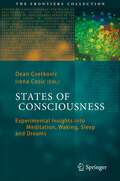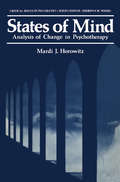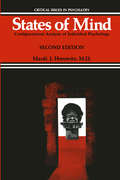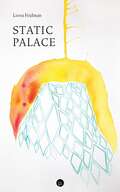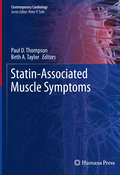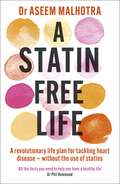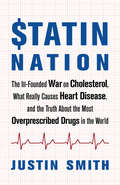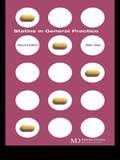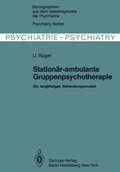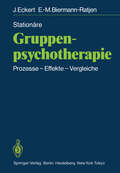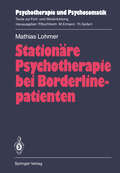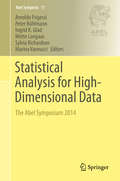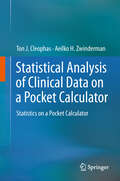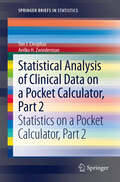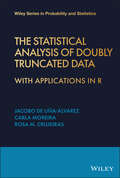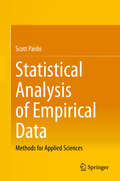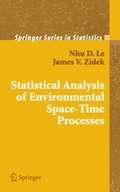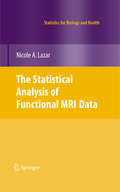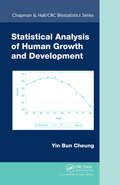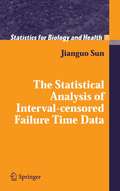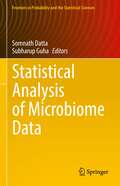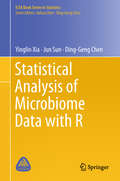- Table View
- List View
States of apology (PDF)
by Michael CunninghamThis book offers a critical consideration of the apology in politics. It provides a detailed overview of all aspects of the phenomenon of the apology made by states, which has increased significantly since the mid-1980s. It is the product of a decade’s research and reflection on the subject and thus provides a complete coverage of all the key debates and features. States of apology evaluates the relationship between the personal apology and the apology in politics, the political and cultural factors behind its emergence and the philosophical problems generated by the state apologising and in particular the question of responsibility across generations. The book also considers the dynamics of domestic apologies and the relationship of the apology to the field of international relations. It is written in a clear and jargon-free style which will make it accessible to both students and non-students alike.
States of Consciousness: Experimental Insights into Meditation, Waking, Sleep and Dreams (The Frontiers Collection)
by Dean Cvetkovic and Irena CosicIn this accessible overview of current knowledge, an expert team of editors and authors describe experimental approaches to consciousness. These approaches are shedding light on some of the hitherto unknown aspects of the distinct states of human consciousness, including the waking state, different states of sleep and dreaming, meditation and more. The book presents the latest research studies by the contributing authors, whose specialities span neuroscience, neurology, biomedical engineering, clinical psychology and psychophysiology, psychosocial medicine and anthropology. Overall this anthology provides the reader with a clear picture of how different states of consciousness can be defined, experimentally measured and analysed. A future byproduct of this knowledge may be anticipated in the development of systematic corrective treatments for many disorders and pathological problems of consciousness.
States of Mind: Analysis of Change in Psychotherapy (Critical Issues in Psychiatry)
by Mardi HorowitzSome will wonder why this book, with its specific focus on the pro cess of change in psychotherapy, was chosen for inclusion in "Crit ical Issues in Psychiatry: A Series for Residents and Clinicians" as our books are generally devoted to a broad topical survey of some im portant clinical area in the practice of psychiatry or a related mental health discipline. The answer will become rapidly apparent to the reader, for Dr. Horowitz has developed an exciting, creative, and practical method whereby any psychotherapist can understand, monitor, conceptualize, and evaluate the process of change in psychotherapy. His method of "configurational analysis" utilizes direct clinical observations of emotional states, role relationships, and information processing to systematically, in a step-by-step fashion, organize and describe clinical data. It can be employed at any point in the therapeutic transaction, from the time of initial presentation to the time of termina tion or follow-up. This method of organizing information about a person, his problems and resources, and the nature of the psychotherapeutic transaction provides the therapist with a powerful tool with which to both understand and communicate how and why change occurs, or does not occur, in psychotherapy. It can be applied all the way from the description of large-scale patterns to the microanalytic dissection and understanding of a small segment of a therapy session.
States of Mind: Configurational Analysis of Individual Psychology (Critical Issues in Psychiatry)
by Mardi Jon HorowitzStatic Palace
by Leora FridmanIn the face of unimaginably violent systems, our most vulnerable bodies — sick, disabled, unable to rise from bed — offer the resistance of imperative vulnerability. What can we learn from the body that cannot help but fail? How can porosity perform treachery within entrenched opressions? What kind of reading and relationship to text can enrich relationship instead of inscribing boundaries between us? What does it mean to accept the unacceptable, and what kind of power becomes available when we submit to forces larger than ourselves? How might we take refuge in discomfort, and in the process refuse the stale comforts offered by hyper-capitalist economics and white supremacy? Static Palace, a collection of linked essays, weaves the writer’s experiences of chronic illness and activism under Trump rule to explore the possibility that arises from circumstances we often perceive as ruin: hopeless political systems, disabled bodies, narratives that stutter and do not complete themselves, the devastation of climate change. Spurred by the writer’s diagnosis with endometriosis and accompanying chronic conditions — which occurred immediately following the 2016 US Presidential Election — Static Palace is especially relevant in the context of rising fascism, pandemics, and the decay of social services and support networks. A direct engagement with the patchwork, fragmented brain of digital life and sick brain, Static Palace is part lyric essay and part cultural criticism: it pulls from current events, including Black-led resistance movements and disability justice activism, and cites contemporary thinkers on gender, feminism, care, critical race, and disability studies towards an artful treatment of crisis and community. Its concerns move toward connection and inter-being. By threading a wide variety of theories and politics through the personal, Fridman seeks a fertile integrity through — and with — subjectivity. We witness a mind making, culling, and attempting to stave off isolation through intertextual and interpersonal conversation. This work complicates the meaning of belonging, family and tribe, challenges our impulses toward narrative resolution, and offers a nuanced understanding of interdependent being and thought.
Statin-Associated Muscle Symptoms (Contemporary Cardiology)
by Paul D. Thompson Beth A. TaylorThis book provides an overview of statin-associated muscle symptoms (SAMS) from clinical presentation to treatment and possible metabolic causes. It examines the risk factors, presentations, diagnosis and differential diagnosis, clinical management, and financial costs of SAMS. The book also highlights patients’ perspectives on SAMS such as the psychosocial, emotional, and societal factors influencing their perceptions and experiences. Finally, the book presents the results of observational and clinical trials on the prevalence of SAMS, clinical trials for treatments, and potential future research approaches for improving the understanding and treatment of SAMS. A key addition to the Contemporary Cardiology series, Statin-Associated Muscle Symptoms is an essential resource for physicians, medical students, residents, fellows, and allied health professionals in cardiology, endocrinology, pharmacotherapy, primary care, and health promotion and disease prevention.
A Statin-Free Life: A revolutionary life plan for tackling heart disease – without the use of statins
by Dr Aseem Malhotra'Giving you all the facts to help you decide how best to have a healthy life. - Dr Phil HammondStatins are among the most widely prescribed drugs in the world. Yet many report unacceptable side effects and a US survey revealed that 75 per cent of respondents stopped taking them within a year. So what is the evidence for their benefits? Dr Aseem Malhotra, author of the bestselling The 21-Day Immunity Plan and co-author of the bestselling The Pioppi Diet, examines the claims for statins and their role in lowering cholesterol and preventing heart disease. He introduces us to his targeted heart-health plan, which, with a diet plan, recipes and advice on reducing stress and increasing movement, can help us to live statin-free and take control of our own health.'Backed by science, this is a riveting read for anyone with a heart.' - Liz Earle'Aseem's programme gives you the best opportunity for a v long and healthy life.' - Ross Walker'Get this book to figure out if a statin-free life is right for you.' - Dr Robert Lustig
Statin Nation: The Ill-Founded War on Cholesterol, What Really Causes Heart Disease, and the Truth About the Most Overprescribed Drugs in the World
by Justin SmithHeart disease is the leading cause of death worldwide, and for decades conventional health authorities have pushed that the culprits are fat and cholesterol clogging up coronary arteries. Consequently, lowering cholesterol has become a hugely lucrative business, and cholesterol-lowering Statin drugs are now the most prescribed medication in the world, with clinical data showing one billion people eligible for prescription. However, these cholesterol guidelines have been heavily criticized, and increasingly, doctors and researchers have been questioning the role cholesterol plays in heart disease. We now know that people with heart disease often do not, in fact, have high cholesterol, and even the strongest supporters of the cholesterol hypothesis now admit that no ideal level of cholesterol can be identified. Large-scale studies have proven that statins are not generating the benefits that were predicted, and new research shows that high cholesterol may actually prevent heart disease. Worse still, millions of people in the United States and worldwide are taking statins preventatively, at great cost to their health. A complete reevaluation of the real causes of heart disease is long overdue, not to mention an inquiry into why the pharmaceutical industry continues to overprescribe statins (and market them aggressively to consumers) despite this evidence. Statin Nation offers a new understanding of heart disease, and Justin Smith forges an innovative path away from the outdated cholesterol myth with a viable alternative model to address the real causes of heart disease. Statin Nation provides detailed examinations of nutritional alternatives that are up to six times more effective than statins, and other interventions that have been shown to be up to eleven times more effective than statins. But all of these methods are currently ignored by health authorities. Smith provides a heart disease prevention plan that anyone can use, providing hope for the future of heart-disease treatment with a purpose.
Statins in General Practice: Pocketbook
by Allan GawNo member of the primary care team can afford to be indifferent to the tremendous developments that have taken place in the areas of coronary heart disease and vascular disease prevention. This new edition of Statins in General Practice includes data from the major new clinical trials. This short book contains everything that the general practition
Statins in General Practice: Pocketbook
by Allan GawNo member of the primary care team can afford to be indifferent to the tremendous developments that have taken place in the areas of coronary heart disease and vascular disease prevention. This new edition of Statins in General Practice includes data from the major new clinical trials. This short book contains everything that the general practition
Stationär-ambulante Gruppenpsychotherapie: Ein langfristiges Behandlungsmodell (Monographien aus dem Gesamtgebiete der Psychiatrie #27)
by U. RügerStationäre Gruppen-psychotherapie: Prozesse Effekte Vergleiche
by Jochen Eckert Eva-M. Biermann-RatjenStationäre Psychotherapie bei Borderlinepatienten (Psychotherapie und Psychosomatik)
by Mathias LohmerBorderlinepatienten werden oft als "Problempatienten" angesehen (Neigung zum Agieren, Abbrechen der Therapie, Gegenübertragungsprobleme beim Therapeuten) und haben deshalb besondere Modifikationen im therapeutischen Setting notwendig gemacht. Da sie ambulant kaum zu behandeln sind, kommt der stationären Psychotherapie bei diesen Patienten eine besondere Bedeutung zu. Diese stellt oft die einzige realistische Entwicklungschance dar, gleichzeitig erzeugt die komplexe soziale Dynamik einer Psychotherapiestation gerade für Borderlinepatienten besondere Probleme, die unter Umständen eher zu einer Verschlechterung als zu einer Verbesserung ihres Zustandes führen können. Das vorliegende Buch vermittelt einen umfassenden Überblick über historische Entwicklung, theoretische Grundlagen und klinische Praxis der stationären analytischen Psychotherapie bei Borderlinepatienten. Ein durchgehendes Fallbeispiel verdeutlicht die theoretischen Ausführungen. Im empirischen Teil der Arbeit werden ein englisches und ein amerikanisches Behandlungsmodell dargestellt. Der Autor plädiert dafür, die anglo-amerikanischen Ansätze stärker in die deutsche Behandlungstradition zu integrieren.
Statistical Analysis for High-Dimensional Data: The Abel Symposium 2014 (Abel Symposia #11)
by Arnoldo Frigessi Peter Bühlmann Ingrid K. Glad Mette Langaas Sylvia Richardson Marina VannucciThis book features research contributions from The Abel Symposium on Statistical Analysis for High Dimensional Data, held in Nyvågar, Lofoten, Norway, in May 2014. The focus of the symposium was on statistical and machine learning methodologies specifically developed for inference in “big data” situations, with particular reference to genomic applications. The contributors, who are among the most prominent researchers on the theory of statistics for high dimensional inference, present new theories and methods, as well as challenging applications and computational solutions. Specific themes include, among others, variable selection and screening, penalised regression, sparsity, thresholding, low dimensional structures, computational challenges, non-convex situations, learning graphical models, sparse covariance and precision matrices, semi- and non-parametric formulations, multiple testing, classification, factor models, clustering, and preselection. Highlighting cutting-edge research and casting light on future research directions, the contributions will benefit graduate students and researchers in computational biology, statistics and the machine learning community.
Statistical Analysis of Clinical Data on a Pocket Calculator: Statistics on a Pocket Calculator
by Ton J. Cleophas Aeilko H. ZwindermanThe core principles of statistical analysis are too easily forgotten in today’s world of powerful computers and time-saving algorithms. This step-by-step primer takes researchers who lack the confidence to conduct their own analyses right back to basics, allowing them to scrutinize their own data through a series of rapidly executed reckonings on a simple pocket calculator. A range of easily navigable tutorials facilitate the reader’s assimilation of the techniques, while a separate chapter on next generation Flash prepares them for future developments in the field. This practical volume also contains tips on how to deny hackers access to Flash internet sites. An ideal companion to the author’s co-authored works on statistical analysis for Springer such as Statistics Applied to Clinical Trials, this monograph will help researchers understand the processes involved in interpreting clinical data, as well as being a necessary prerequisite to mastering more advanced statistical techniques. The principles of statistical analysis are easily forgotten in today’s world of time-saving algorithms. This step-by-step primer takes researchers back to basics, enabling them to examine their own data through a series of sums on a simple pocket calculator.
Statistical Analysis of Clinical Data on a Pocket Calculator, Part 2: Statistics on a Pocket Calculator, Part 2 (SpringerBriefs in Statistics)
by Ton J. Cleophas Aeilko H. ZwindermanThe first part of this title contained all statistical tests relevant to starting clinical investigations, and included tests for continuous and binary data, power, sample size, multiple testing, variability, confounding, interaction, and reliability. The current part 2 of this title reviews methods for handling missing data, manipulated data, multiple confounders, predictions beyond observation, uncertainty of diagnostic tests, and the problems of outliers. Also robust tests, non-linear modeling , goodness of fit testing, Bhatacharya models, item response modeling, superiority testing, variability testing, binary partitioning for CART (classification and regression tree) methods, meta-analysis, and simple tests for incident analysis and unexpected observations at the workplace and reviewed. Each test method is reported together with (1) a data example from practice, (2) all steps to be taken using a scientific pocket calculator, and (3) the main results and their interpretation. Although several of the described methods can also be carried out with the help of statistical software, the latter procedure will be considerably slower. Both part 1 and 2 of this title consist of a minimum of text and this will enhance the process of mastering the methods. Yet the authors recommend that for a better understanding of the test procedures the books be used together with the same authors' textbook "Statistics Applied to Clinical Studies" 5th edition edited 2012, by Springer Dordrecht Netherlands. More complex data files like data files with multiple treatment modalities or multiple predictor variables can not be analyzed with a pocket calculator. We recommend that the small books "SPSS for starters", Part 1 and 2 (Springer, Dordrecht, 2010, and 2012) from the same authors be used as a complementary help for the readers' benefit.
The Statistical Analysis of Doubly Truncated Data: With Applications in R (Wiley Series in Probability and Statistics)
by Jacobo de Uña-Álvarez Rosa M. Crujeiras Prof Carla MoreiraA thorough treatment of the statistical methods used to analyze doubly truncated data In The Statistical Analysis of Doubly Truncated Data, an expert team of statisticians delivers an up-to-date review of existing methods used to deal with randomly truncated data, with a focus on the challenging problem of random double truncation. The authors comprehensively introduce doubly truncated data before moving on to discussions of the latest developments in the field. The book offers readers examples with R code along with real data from astronomy, engineering, and the biomedical sciences to illustrate and highlight the methods described within. Linear regression models for doubly truncated responses are provided and the influence of the bandwidth in the performance of kernel-type estimators, as well as guidelines for the selection of the smoothing parameter, are explored. Fully nonparametric and semiparametric estimators are explored and illustrated with real data. R code for reproducing the data examples is also provided. The book also offers: A thorough introduction to the existing methods that deal with randomly truncated data Comprehensive explorations of linear regression models for doubly truncated responses Practical discussions of the influence of bandwidth in the performance of kernel-type estimators and guidelines for the selection of the smoothing parameter In-depth examinations of nonparametric and semiparametric estimators Perfect for statistical professionals with some background in mathematical statistics, biostatisticians, and mathematicians with an interest in survival analysis and epidemiology, The Statistical Analysis of Doubly Truncated Data is also an invaluable addition to the libraries of biomedical scientists and practitioners, as well as postgraduate students studying survival analysis.
The Statistical Analysis of Doubly Truncated Data: With Applications in R (Wiley Series in Probability and Statistics)
by Jacobo de Uña-Álvarez Rosa M. Crujeiras Prof Carla MoreiraA thorough treatment of the statistical methods used to analyze doubly truncated data In The Statistical Analysis of Doubly Truncated Data, an expert team of statisticians delivers an up-to-date review of existing methods used to deal with randomly truncated data, with a focus on the challenging problem of random double truncation. The authors comprehensively introduce doubly truncated data before moving on to discussions of the latest developments in the field. The book offers readers examples with R code along with real data from astronomy, engineering, and the biomedical sciences to illustrate and highlight the methods described within. Linear regression models for doubly truncated responses are provided and the influence of the bandwidth in the performance of kernel-type estimators, as well as guidelines for the selection of the smoothing parameter, are explored. Fully nonparametric and semiparametric estimators are explored and illustrated with real data. R code for reproducing the data examples is also provided. The book also offers: A thorough introduction to the existing methods that deal with randomly truncated data Comprehensive explorations of linear regression models for doubly truncated responses Practical discussions of the influence of bandwidth in the performance of kernel-type estimators and guidelines for the selection of the smoothing parameter In-depth examinations of nonparametric and semiparametric estimators Perfect for statistical professionals with some background in mathematical statistics, biostatisticians, and mathematicians with an interest in survival analysis and epidemiology, The Statistical Analysis of Doubly Truncated Data is also an invaluable addition to the libraries of biomedical scientists and practitioners, as well as postgraduate students studying survival analysis.
Statistical Analysis of Empirical Data: Methods for Applied Sciences
by Scott PardoResearchers and students who use empirical investigation in their work must go through the process of selecting statistical methods for analyses, and they are often challenged to justify these selections. This book is designed for readers with limited background in statistical methodology who seek guidance in defending their statistical decision-making in the worlds of research and practice. It is devoted to helping students and scholars find the information they need to select data analytic methods, and to speak knowledgeably about their statistical research processes. Each chapter opens with a conundrum relating to the selection of an analysis, or to explaining the nature of an analysis. Throughout the chapter, the analysis is described, along with some guidance in justifying the choices of that particular method.Designed to offer statistical knowledge to the non-specialist, this volume can be used in courses on research methods, or for courses on statistical applications to biological, medical, life, social, or physical sciences. It will also be useful to academic and industrial researchers in engineering and in the physical sciences who will benefit from a stronger understanding of how to analyze empirical data. The book is written for those with foundational education in calculus. However, a brief review of fundamental concepts of probability and statistics, together with a primer on some concepts in elementary calculus and matrix algebra, is included. R code and sample datasets are provided.
Statistical Analysis of Environmental Space-Time Processes (Springer Series in Statistics)
by Nhu D. Le James V. ZidekThis book provides a broad introduction to the subject of environmental space-time processes, addressing the role of uncertainty. It covers a spectrum of technical matters from measurement to environmental epidemiology to risk assessment. It showcases non-stationary vector-valued processes, while treating stationarity as a special case. In particular, with members of their research group the authors developed within a hierarchical Bayesian framework, the new statistical approaches presented in the book for analyzing, modeling, and monitoring environmental spatio-temporal processes. Furthermore they indicate new directions for development.
The Statistical Analysis of Functional MRI Data (Statistics for Biology and Health)
by Nicole LazarThe study of brain function is one of the most fascinating pursuits of m- ern science. Functional neuroimaging is an important component of much of the current research in cognitive, clinical, and social psychology. The exci- ment of studying the brain is recognized in both the popular press and the scienti?c community. In the pages of mainstream publications, including The New York Times and Wired, readers can learn about cutting-edge research into topics such as understanding how customers react to products and - vertisements (“If your brain has a ‘buy button,’ what pushes it?”, The New York Times,October19,2004),howviewersrespondtocampaignads(“Using M. R. I. ’s to see politics on the brain,” The New York Times, April 20, 2004; “This is your brain on Hillary: Political neuroscience hits new low,” Wired, November 12,2007),howmen and womenreactto sexualstimulation (“Brain scans arouse researchers,”Wired, April 19, 2004), distinguishing lies from the truth (“Duped,” The New Yorker, July 2, 2007; “Woman convicted of child abuse hopes fMRI can prove her innocence,” Wired, November 5, 2007), and even what separates “cool” people from “nerds” (“If you secretly like Michael Bolton, we’ll know,” Wired, October 2004). Reports on pathologies such as autism, in which neuroimaging plays a large role, are also common (for - stance, a Time magazine cover story from May 6, 2002, entitled “Inside the world of autism”).
Statistical Analysis of Human Growth and Development
by Yin Bun CheungStatistical Analysis of Human Growth and Development is an accessible and practical guide to a wide range of basic and advanced statistical methods that are useful for studying human growth and development. Designed for nonstatisticians and statisticians new to the analysis of growth and development data, the book collects methods scattered through
The Statistical Analysis of Interval-censored Failure Time Data (Statistics for Biology and Health)
by Jianguo SunThis book collects and unifies statistical models and methods that have been proposed for analyzing interval-censored failure time data. It provides the first comprehensive coverage of the topic of interval-censored data and complements the books on right-censored data. The focus of the book is on nonparametric and semiparametric inferences, but it also describes parametric and imputation approaches. This book provides an up-to-date reference for people who are conducting research on the analysis of interval-censored failure time data as well as for those who need to analyze interval-censored data to answer substantive questions.
Statistical Analysis of Microbiome Data (Frontiers in Probability and the Statistical Sciences)
by Somnath Datta Subharup GuhaMicrobiome research has focused on microorganisms that live within the human body and their effects on health. During the last few years, the quantification of microbiome composition in different environments has been facilitated by the advent of high throughput sequencing technologies. The statistical challenges include computational difficulties due to the high volume of data; normalization and quantification of metabolic abundances, relative taxa and bacterial genes; high-dimensionality; multivariate analysis; the inherently compositional nature of the data; and the proper utilization of complementary phylogenetic information. This has resulted in an explosion of statistical approaches aimed at tackling the unique opportunities and challenges presented by microbiome data. This book provides a comprehensive overview of the state of the art in statistical and informatics technologies for microbiome research. In addition to reviewing demonstrably successful cutting-edge methods, particular emphasis is placed on examples in R that rely on available statistical packages for microbiome data. With its wide-ranging approach, the book benefits not only trained statisticians in academia and industry involved in microbiome research, but also other scientists working in microbiomics and in related fields.
Statistical Analysis of Microbiome Data with R (ICSA Book Series in Statistics)
by Yinglin Xia Jun Sun Ding-Geng ChenThis unique book addresses the statistical modelling and analysis of microbiome data using cutting-edge R software. It includes real-world data from the authors’ research and from the public domain, and discusses the implementation of R for data analysis step by step. The data and R computer programs are publicly available, allowing readers to replicate the model development and data analysis presented in each chapter, so that these new methods can be readily applied in their own research. The book also discusses recent developments in statistical modelling and data analysis in microbiome research, as well as the latest advances in next-generation sequencing and big data in methodological development and applications. This timely book will greatly benefit all readers involved in microbiome, ecology and microarray data analyses, as well as other fields of research.

